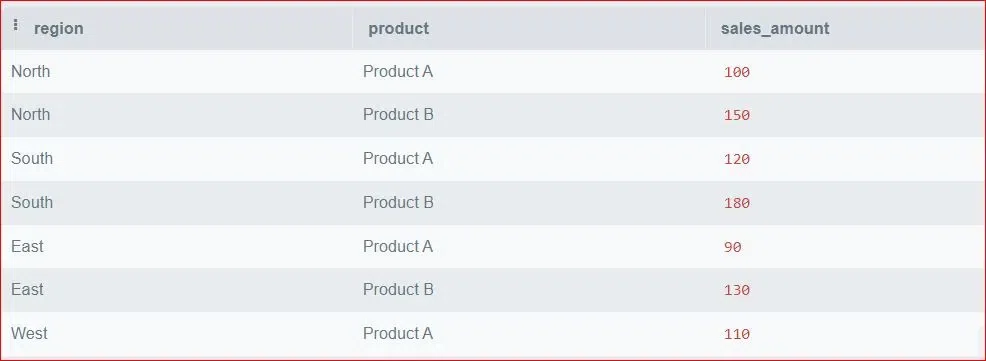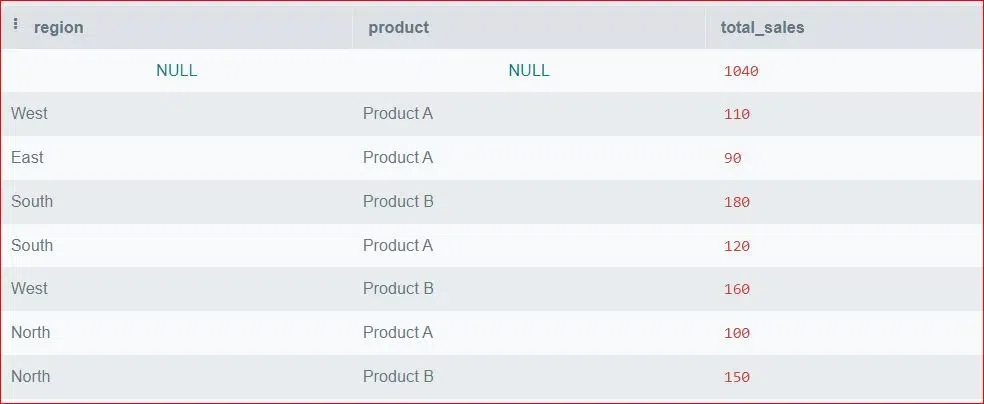
|
|
In database management, reducing and compressing data is one of the most significant jobs. PostgreSQL, which is an open-source, stable relational database management system, boosts many features that are meant to help in this regard. Another element is ROLLUP which maintains the hierarchical data aggregation needed to yield insightful summaries of the dataset. This article is about the details of the application ROLLUP in PostgreSQL for grouping data. What is ROLLUP?ROLLUP is the extension of the GROUP BY function in SQL that supports multi-dimensional aggregation. It sums up the subtotals for a particular set of columns and thus determines the order in which the columns appear. Syntax: The syntax for using ROLLUP in PostgreSQL is as follows: SELECT column1, column2, ..., aggregate_function(column) Here, column1, column2, etc., represent the columns used for grouping, and aggregate_function denotes the function applied to compute the aggregate values. Example of Grouping Data with ROLLUPLet’s create a table named sales data and then insert some data into after that we will perform some query operations of grouping data with ROLLUP. Create the table CREATE TABLE sales ( Insert some sample data INSERT INTO sales_data (region, product, sales_amount) VALUES Output: You can see the table content below:  Sales Data Table Example 1 – Grouping by region and product with ROLLUPQuery: SELECT region, product, SUM(sales_amount) AS total_sales Explanation:
Output: The output would be a total of sales each product by region, sales standing of each region and total sales.  Grouping by region and product Example 2 – Grouping by Region with SubtotalsQuery: SELECT region, SUM(sales_amount) AS total_sales Explanation:
Output: The output will show the total sales for each individual region, subtotals for combinations of regions, and the overall total sales.  Grouping by Region Example 3 – Grouping by Product with SubtotalsSELECT product, SUM(sales_amount) AS total_sales Explanation:
Output: The output will demonstrate the total sales figure for each product alone, find the subtotals for a combination of products, and provide the overall total sales.  Grouping by Product Example 4 – Grouping by Region and Product Category with SubtotalsQuery: SELECT region, product, SUM(sales_amount) AS total_sales Explanation:
Output: These results will be displayed as the sum of sales for different regions and products, the regions subtotals, as well as the grand total of sales.  Grouping by Region and Product ConclusionROLLUP in PostgreSQL is a valuable feature for grouping and summarizing data hierarchically. By leveraging its capabilities, users can efficiently generate insightful summary reports with minimal effort. Understanding its syntax, interpreting results, and considering its limitations are crucial for harnessing the full potential of ROLLUP in PostgreSQL-based database environments. Mastering ROLLUP empowers database professionals to perform comprehensive data analysis and derive meaningful insights from their datasets. |
Reffered: https://www.geeksforgeeks.org
| Databases |
Type: | Geek |
Category: | Coding |
Sub Category: | Tutorial |
Uploaded by: | Admin |
Views: | 15 |